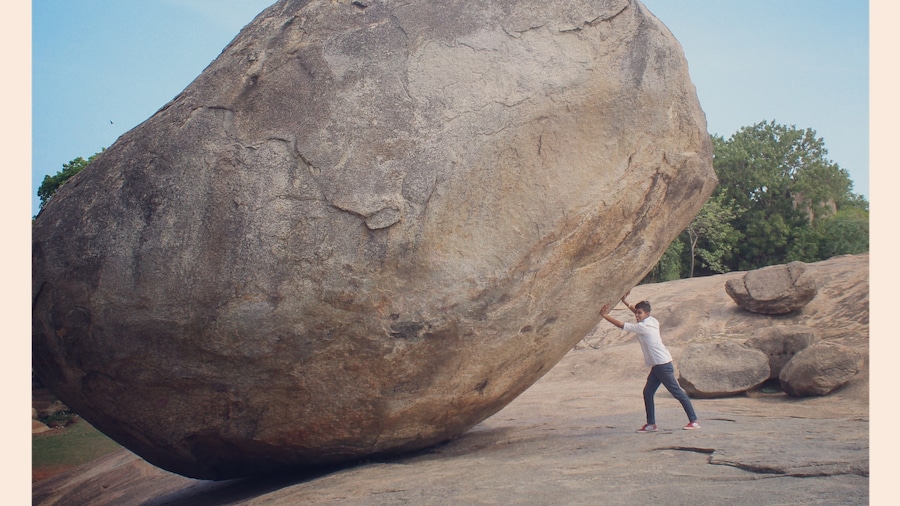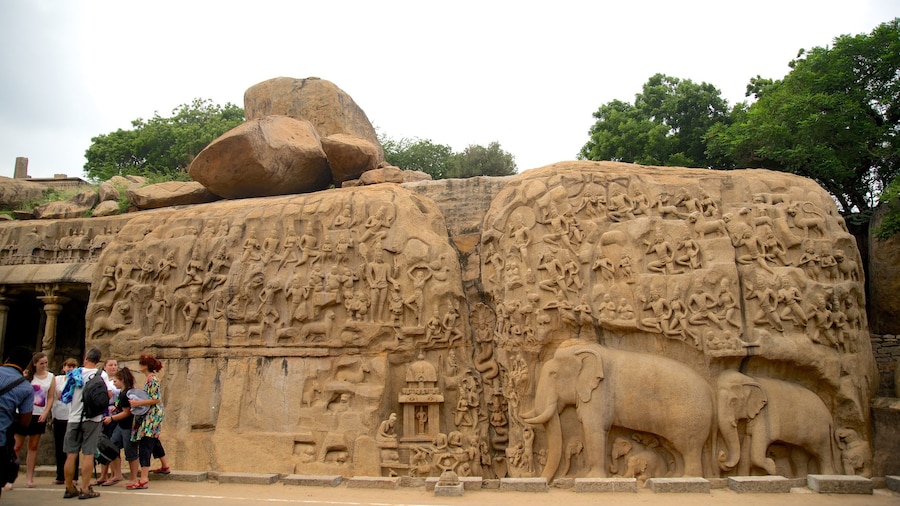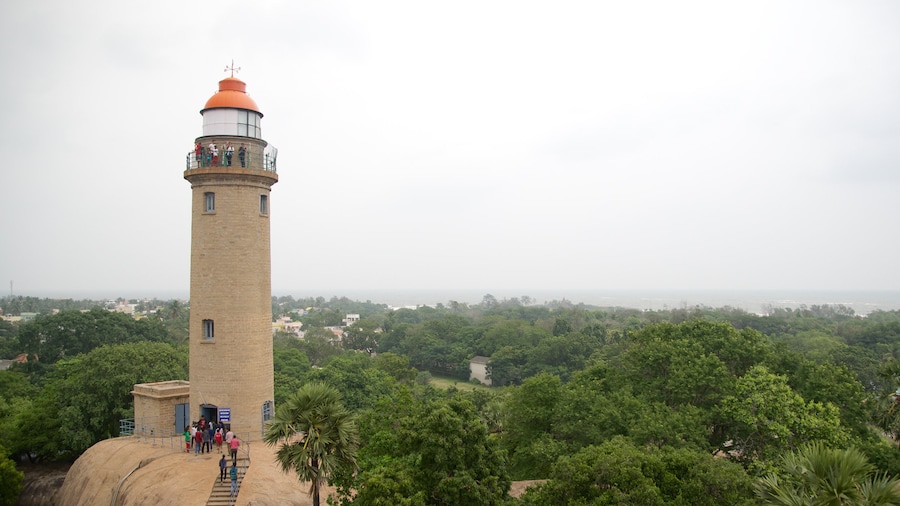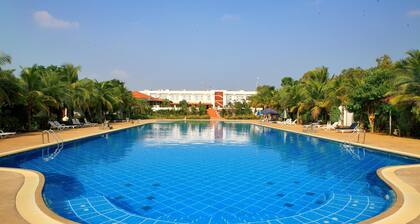Ganesha Ratha is one of the best preserved architectural landmarks of the Pallava dynasty. This multitiered temple was carved from pink granite and features columned façades and symbolic sculptures. Admire this UNESCO World Heritage Site, which enchants with its striking beauty and rich historic significance.
Ganesha Ratha was built in the 7th century by Narasimhavarman I as a tribute to Lord Shiva. For many years, it was topped by a statue of Shivalinga, a Shiva symbol. However, this was replaced in the late 19th century with a figure of Ganesha, the elephant deity. See the original Shivalinga idol under a nearby tree.
This ratha was one of 10 built in the area. All were carved out of single blocks of stone to resemble royal chariots of the gods. Ganesha Ratha is the only complete structure still in existence.
Inspect the exquisitely carved exterior, which reaches a height of 28 feet (8.5 meters). It is decorated with sculpted forms, including those of dwarapalakas, humanoid figures that are said to be the guardians of the site. Look for sculpted depictions of lions and human heads by ornate archways.
Inside the ratha, examine inscriptions and carvings on the walls of its rectangular inner chamber. The written impressions by the west portico are from the old Grantha and Nagari scripts of the Sanskrit language.
After your exploration of Ganesha Ratha, stroll through the surrounding gardens. To the south of the structure is Arjuna's Penance which makes for a stunning sight. This open-air bas-relief is one of the largest of its kind in the world, depicting the trials endured by Arjuna to obtain Lord Shiva's weapon. To the north is Krishna's Butter Ball, a huge rock perched precariously on a ledge, high above the town.
Ganesha Ratha is located in central Mahabalipuram, just a few minutes' walk from the city's main beach. Get there from farther afield via rental car, taxi or rickshaw. The temple is open daily and is free to enter.















